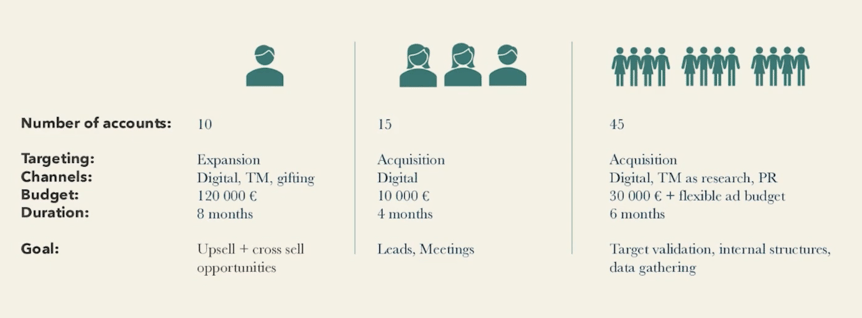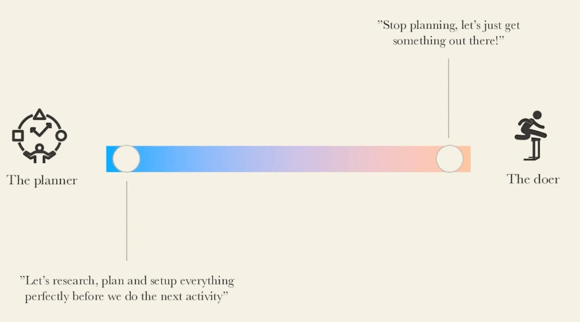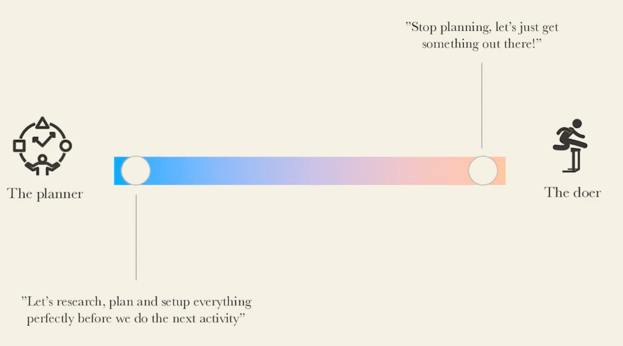Creating a pilot campaign can bring about a few struggles but it also brings numerous opportunities where your company can grow. In this blog post, we will be sharing with you highlights of the virtual event we had with Maike Zimmermann on building an ABM strategy and executing a pilot campaign. She is a Digital Project Manager at Brightvision focusing on helping some of the biggest names in the IT and tech industry build successful strategies.
The First Pilot
In creating your first pilot, it is important to keep in mind that perfection simply does not exist. As your first pilot is also a learning experience, you should note that it is better to focus more on setting clear and sufficient foundations instead of fixating on your first pilot being flawless.
“If you’re not embarrassed by the first version of your ABM strategy, you’ve launched too late”
Comparing your pilot campaigns to those of your rivals should be an essential part of your strategy. However, having a different pilot from your competitors is completely normal. Your campaign should focus more on what fits your team and your business.
Clients often want to know what the right scope, investment, budget, as well as what the right approach is when preparing for a campaign. To answer that, it will vary from each campaign initiative as it will depend on your internal team structure, company structure, target audience, budget, timeline, and even the type of industry you are in. The difference in each of your campaigns will not necessarily signify that one is better or worse than the other.
In our opinion, a successful pilot manager will understand what it is that the team can and perhaps also want to do for an ABM pilot. The holy grail in creating your first pilot would be finding the balance between being ambitious and realistic when planning your campaign.
What should a pilot look like?

Shown above are three examples my team has run in the past. It is important to note that these campaigns have been executed in different countries, as well as different industries, as these can help you determine which number of accounts would work best for you.
For the first client, we wished to target their existing clients in one language - Swedish, located in Sweden. This makes for a much smaller list compared to the third client who is dealing with cold account acquisition in the Benelux region. As for the second client, we started with fifteen accounts and narrowed it down to eight as other accounts did not show a willingness to be set up with a meeting yet. This is a normal occurrence as this is the goal of a pilot program – to know what works and what does not work for you and spot any potential flaws before going any further.
Having a set budget is important and is a huge factor when it comes to deciding how campaigns are to be executed - what you can and cannot do in your campaign. For example, with the second client, we settled on promoting the campaign primarily in digital paid media channels as this was, at the time, the most cost-efficient way to sort of test first ABM elements. This pilot is what you may call an account-based advertising campaign which is a significant step toward account-based marketing.
When creating your target account list, an important thing to note is finding the common denominator for all the accounts you have on your list. If you find it difficult in the common denominator, it is possible that your list is simply too broad or vague.
Another factor that will help you decide the scope of your pilot is the existing relationship with sales. Essentially, having open communication between the teams will make it easier to identify upsell and cross-sell opportunities and be able to support each other throughout the entire pilot.
“ABM pilots are as unique as the companies that run them. But there are a few best practices that can help you and your team decide what scope and setup are right for you.”
The Two Stereotypes


Shown above is a spectrum that shows the range between the two types of approaches – the planner and the doer. The planner strives for perfection. They make sure that they can control the future and the outcome of certain marketing and ABM activities which is, in this case, the pilot. Having this kind of mindset may lead to stagnation – plans only staying as plans. In contrast, a doer moves at a fast pace. They want things to happen as quickly as possible. They do understand that no campaign can run perfectly and smoothly but they do not mind being unorganized and not having a proper foundation in place.
These two types of people can be represented in one team or one company. The planner is no better than the doer and vice versa. There needs to be a balance between the two to be able to run a successful pilot.
How do we run our first pilot?
“Treating the pilot as a proof of concept is the overarching goal.”
1. Good Understanding of Targets
It is critical to note that you should have a well-defined customer profile when we talk about having a thorough understanding of your targets and with that, you can establish a buyer persona. It is advantageous for pilots with named accounts, but not necessary.
Additionally, it is typically advised against selecting the least defined or challenging target audience niche. You are, after all, attempting to demonstrate an idea or concept and if you cannot get the results in time, it can be challenging.
2. Setup in CRM and Ad Platforms
If this is your first time setting up your ABM strategy, you most probably do not require a complex ABM tool. However, it would be great to have it if you can afford it monetarily, as well as with the resources and capabilities you have in your team.
3. A Process for Collaboration with Sales
When collaborating with sales, it does not need to be the whole team. If necessary, you might begin with just one person to sort of practice that alignment and see what works.
4. Project Milestones
Referring to the necessary structure is therefore appropriate at this stage. Having a clear, constrained scope yet also being adaptable and flexible as you go should be the goal. For instance, if you run a pilot that lasts for three to four months, you undoubtedly will not be able to duplicate the success of a fully developed program that could take several months or even years to complete.
5. Learning and Insights
Prior to learning anything, develop a list of what you want to learn, and make sure you can track it. It would be best to have it written down. You must specify your current situation, the current state of team understanding, and your true goals to really show that progression and success as well as value from the pilot.
7. Advocate Honestly and Early
You want the whole team to already be aware of what you are doing and, ideally, to be excited and as passionate as you are about it. Have it announced in meetings, make sure there are instructional resources available, and gradually start involving more and more individuals as you grow from a pilot to a program.
What are questions to ask when running a pilot?
In addition to teaching our clients about all these best practices, we also advise them to consider and ask themselves the following:
1. Can it be repeated?
2. Can it be scaled?
How do I know if I have a pilot or program?
In essence, the program is your growth strategy laid out in a structured format. Additionally, it should be adaptable and help both sales and marketing grow so that they may thrive together. You should often look at these three factors as you start to transition from a series of pilots or simply one pilot into a program.
1. ABM is not one single campaign, it is a long-term growth strategy
A campaign will focus on one element of the buyer's journey at a specific point in time. Moreover, a program should be implemented across a larger range than a single campaign because it functions more like a component of your entire plan.
2. ABM pilots jump ahead; a program covers all funnel stages
ABM has the potential to produce immediate outcomes but expecting them is not realistic. As previously said, pilots typically have a shorter duration because they serve more as proof concept for establishing a fully developed program.
Your pilot might address only one aspect or stage of the funnel. With this, the goal of your program should be to identify and achieve the remaining stages of the customer journey.
3. Culture and attitude
For a program, there needs to be a culture within your organization, or at least within your team to allow for testing and learning. On the other hand, a pilot will most probably need at most one engaged salesperson.
How do we build a program?
- Develop an ABM program using this staged methodology so that you may optimize as you go.
- You should consider the factors that were not as critical for the pilot but end up being crucial for a program to scale and grow a pilot into a long-term strategy. When things are interconnected and people think holistically, ABM stops being just a marketing initiative and becomes a more mature growth strategy.
- Lack of preparedness for this growth, such as failing to gradually bring everyone on board or failing to put the necessary data in place, may end up hurting your project over time.
- You will require a lot of commitment and perseverance when pushing for a program internally as it is impossible to build a program overnight,
Key Takeaway
“It is essential to adopt a crawl, walk, run approach to your ABM tactics, strategy, and program so that you can actually move from pilot to program.”
Want to learn more about creating smarter ABM strategies? Watch our webinar, Go-to Market Strategies for B2B Sales & Marketing Teams, here!
If you want to know how our experts here at Brightvision can support your B2B tech company with ABM, marketing, lead generation, and sales, book a meeting so we can chat!


